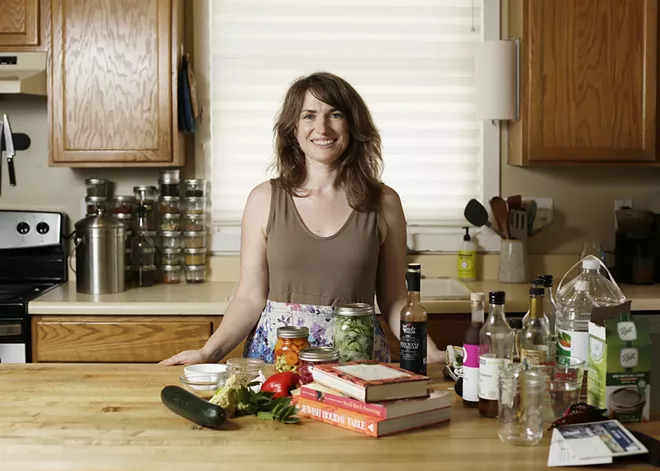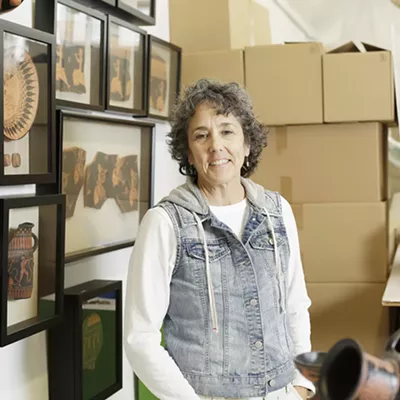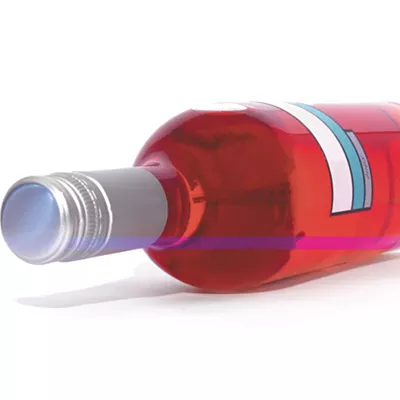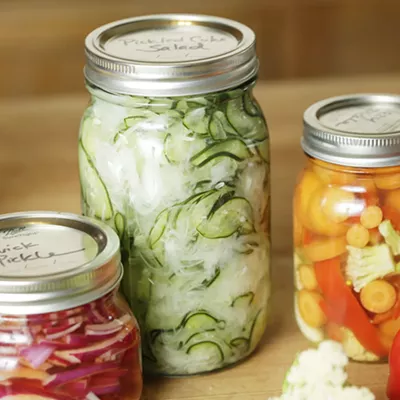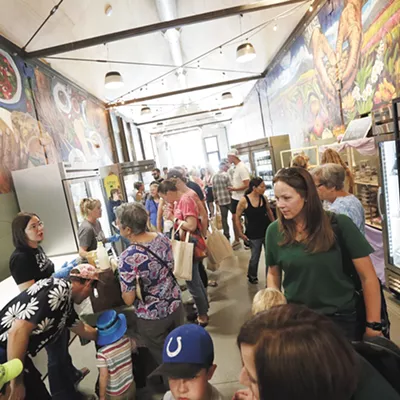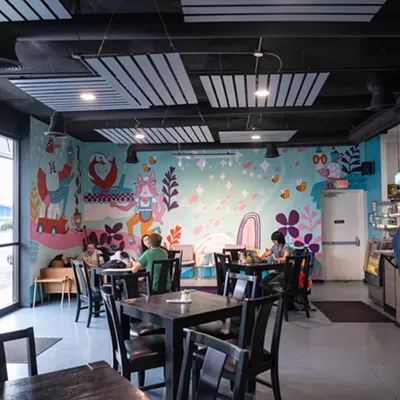To feed someone is an act of love. An act of nourishment. An act of connection.
You might invite that person over for a meal, or maybe you drop off a freshly baked loaf of bread or a batch of cookies. Even something as simple as making them a cup of coffee communicates "I care."
While it may not be the first thing that pops into your head, gifting pickled vegetables, created through a quick pickle or hot water canning process, can be a flavorful act of kindness.
Kate Lebo, author of The Book of Difficult Fruit and Pie School, among other works, got into pickling in her early '20s when she realized how accessible the craft was. Wanting to be safe, Lebo picked up the Ball Complete Book of Home Preserving and set about making pickled beets.
Jar after jar of pickled beets made their way to Lebo's countertop. Only after she finished pickling the final beet and gave her creation a try did she realize something: She hated the taste of pickled beets.
"That's a tip for the beginners here is make tiny batches first to make sure you like the recipe," she says. "Part of what's great about pickling is the way that it will preserve large amounts of food, but if you don't actually like the flavor of that food, what is the point?"
Through trial and error, Lebo found recipes she actually did enjoy. During a time in her life when she frequently housesat, Lebo would put thinly sliced onion and cucumber in a jar of red wine vinegar and add the concoction to sandwiches or have it as a snack wherever she was at the time.
She would then leave the homeowners a jar of their own quick pickle as a gift.
Quick pickling, as the name suggests, is the fastest method of pickling. Simply put fresh, clean veggies of your choice in a clean jar of brine, and let sit for at least a few hours before enjoying.
Lebo often lets her garden dictate what she quick pickles. If she has a lot of cucumbers, coriander and dill on hand, she might throw that in a jar with onion or garlic, chili or whatever else calls to her from her spice rack.
"It's a response to the bounty of the season and figuring out what to do with it," Lebo says. "It's so flexible and it's safe. It's fun."
Hot water bath canning, which uses hot water to kill bacteria and create airtight seals, is a little more time intensive because you must first sterilize your jars and lids. The plus side is that after the extra work, your canned food will be shelf stable for years.
For hot water bath canning, aspiring picklers can buy a canning pot ($146.99 at the Kitchen Engine) or use a large stock pot they have already.
Clean glass jars are a must. Lebo says these jars can be recycled, but they have to be chip-free and able to fit a standard Ball or Kerr lid. Lids only seal once, so those must be new each time, but Lebo says it's OK to reuse the rings if they're not bent, rusty or dirty.
Lebo also says it's nice to have a food scale ($22.99), funnels (one for wide-neck jars and one for narrow-neck jars, ($18.99-$19.99), a ladle ($8.99), a jar lifter ($9.99) and tongs ($14.99) to lift the lids and jars after they've been sterilized.
Lebo notes that hard water in Spokane might stain jars and equipment when hot water canning, so she adds a "glug" of vinegar into the canning bath and any water being used to sterilize metal equipment to remove the hard water stains.
It's also important to use a clean cloth to make sure there is no water, brine or vegetable pieces on the rim of the jar or in the threads of the ring. Canners should also be sure not to overfill jars when hot water canning, as the contents can force their way to the top and potentially break the seal.
"All these methods, there isn't a right one," Lebo says. "Choose the one that fits your life and keeps you safe."
Susie Craig, a professor of food safety and health at Washington State University Extension in Seattle, stresses that pickling and fermentation are safe when people use tested recipes from the USDA, the National Center for Home Food Preservation (NCHFP) and the most up-to-date Ball Blue Book Guide to Preserving.
In other words, the family recipe that's been passed down from generation to generation doesn't cut it in terms of food safety.
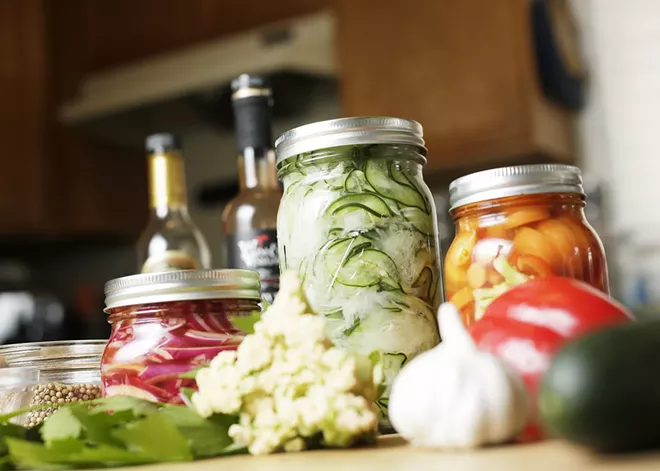
Craig shares that while the USDA Complete Guide to Home Canning can often be found for sale online, it is free to access through the NCHFP website. Craig also hosts the "Food Safety in a Minute" podcast and has episodes covering, among many other topics, necessary equipment for food preservation, canning foods and fermenting foods.
"The No. 1 myth in food safety is that if it looks OK and smells OK, it is OK," she says. "It's the spoilage bacteria primarily that cause things to look and smell bad, but the pathogenic disease-causing bacteria, they are not spoilage bacteria, so you don't know that they're there."
In pickling, Craig says, vinegar with at least 5% acidity controls harmful bacteria when used in appropriate proportions.
"The level of acidity is important for flavor and for safety," she says. "In tested recipes, ingredients, recipe ratios and the procedures are tested for safety. Using these recipes and following directors can prevent the growth of Clostridium botulinum. Botulism can be fatal."
(With fermentation, a different process that's used to make things like sauerkraut, the natural bacteria in vegetables like cabbage break down natural sugars and other substances, leading to the formation of lactic acid, which helps control harmful bacteria.)
Even after using trusted sources, sometimes things go wrong. Before consuming your pickled goods, Craig says people should check for signs of spoilage (odor, changes in color or texture) or a broken seal. If found, those jars should be discarded following NCHFP instructions.
Neither Lebo nor Craig want people to be scared to try pickling. It's smart though to first do some research and "understand the basics of pickling, the science which supports recipe formulations, equipment, processing and storage," Craig says.
"Fermentation has been around for decades," she says. "The difference today is consumers have resources that are research based — recipes that are good and safe to eat, and quality equipment."
A little research and the right equipment can go a long way, turning pickling into, as Lebo sees it, a small but significant source of power.
"How do we remember in our daily lives all the ways that we have the power to create the world around us, rather than buy it from someone else, ready made?" she says. "Being able to buy something ready made, it's fantastic to be able to save that time so that we can devote ourselves to something else in our lives. But I think when we go for convenience over and over and over, we lose a sense of independence and power and the ability to make our lives what we want to make them. Pickling, even as simple and homely as it is, is, to me, part of that."

